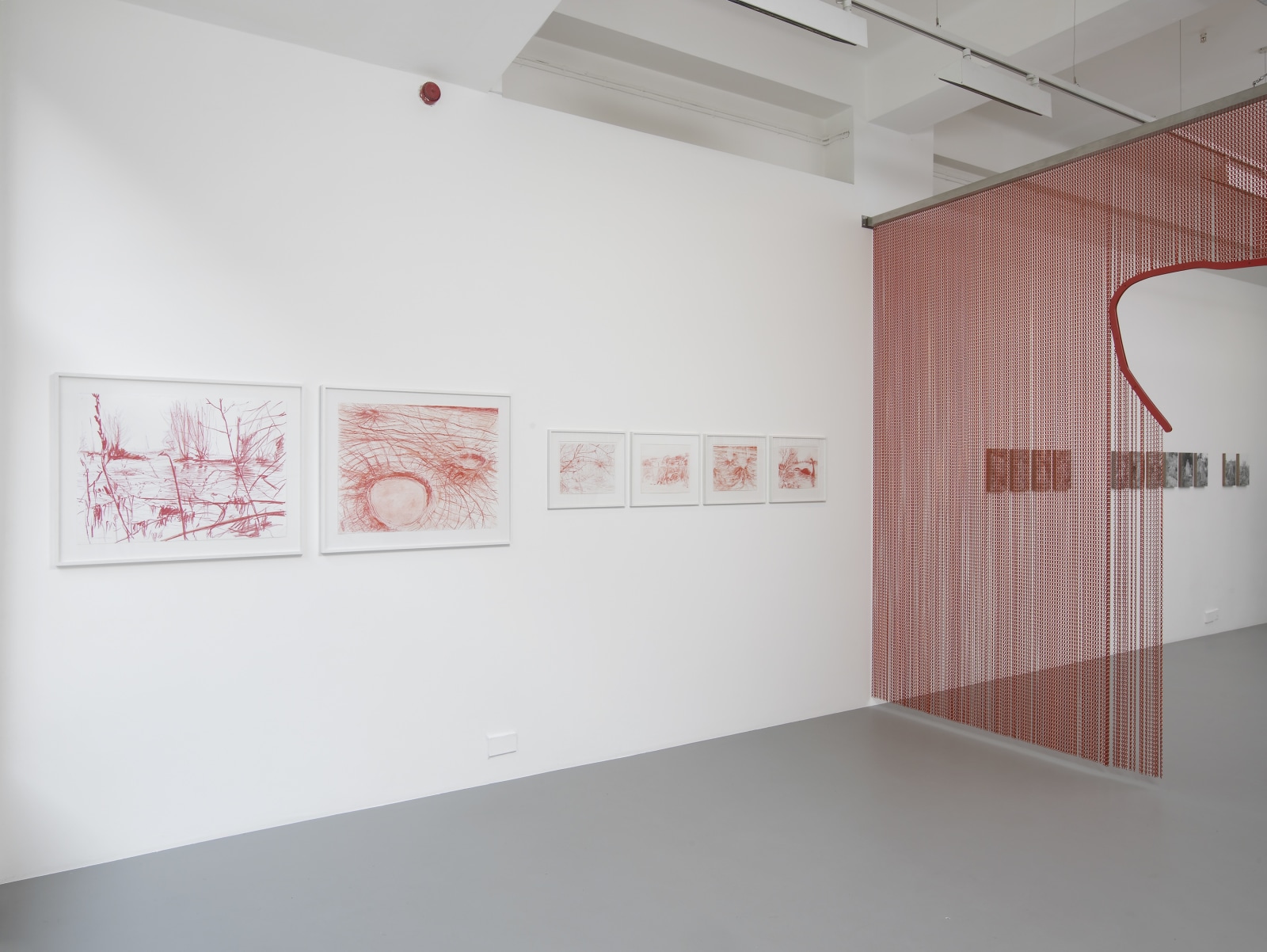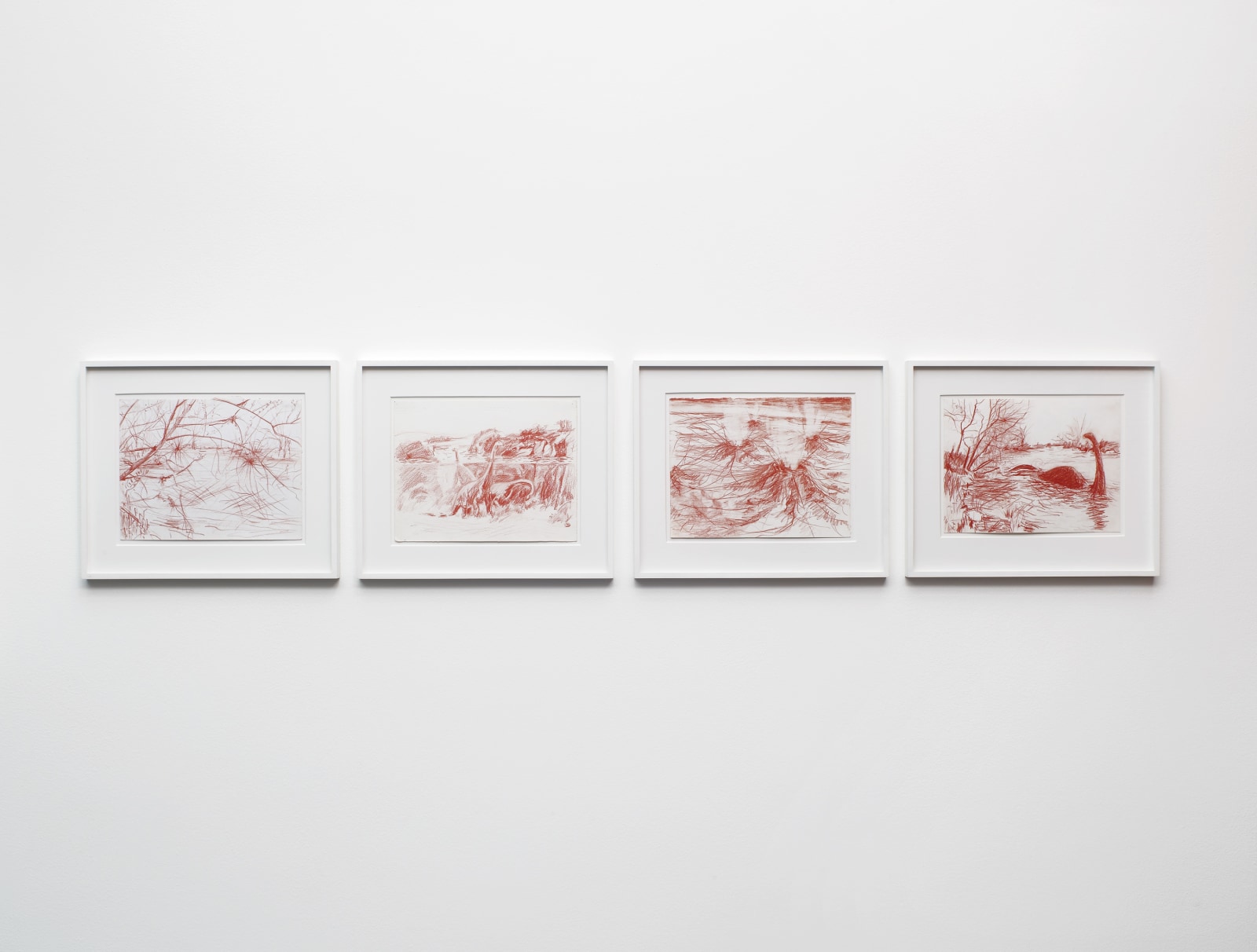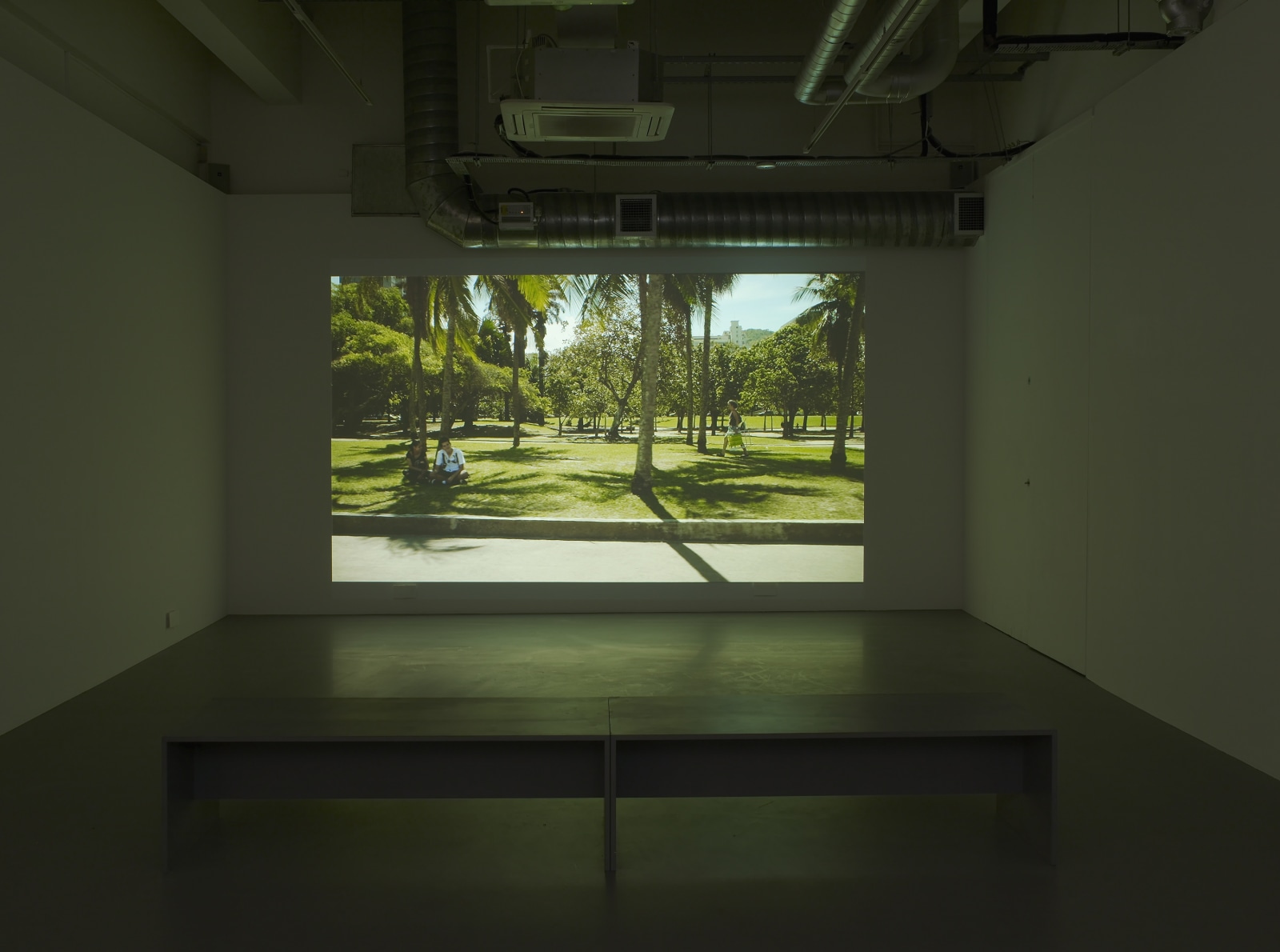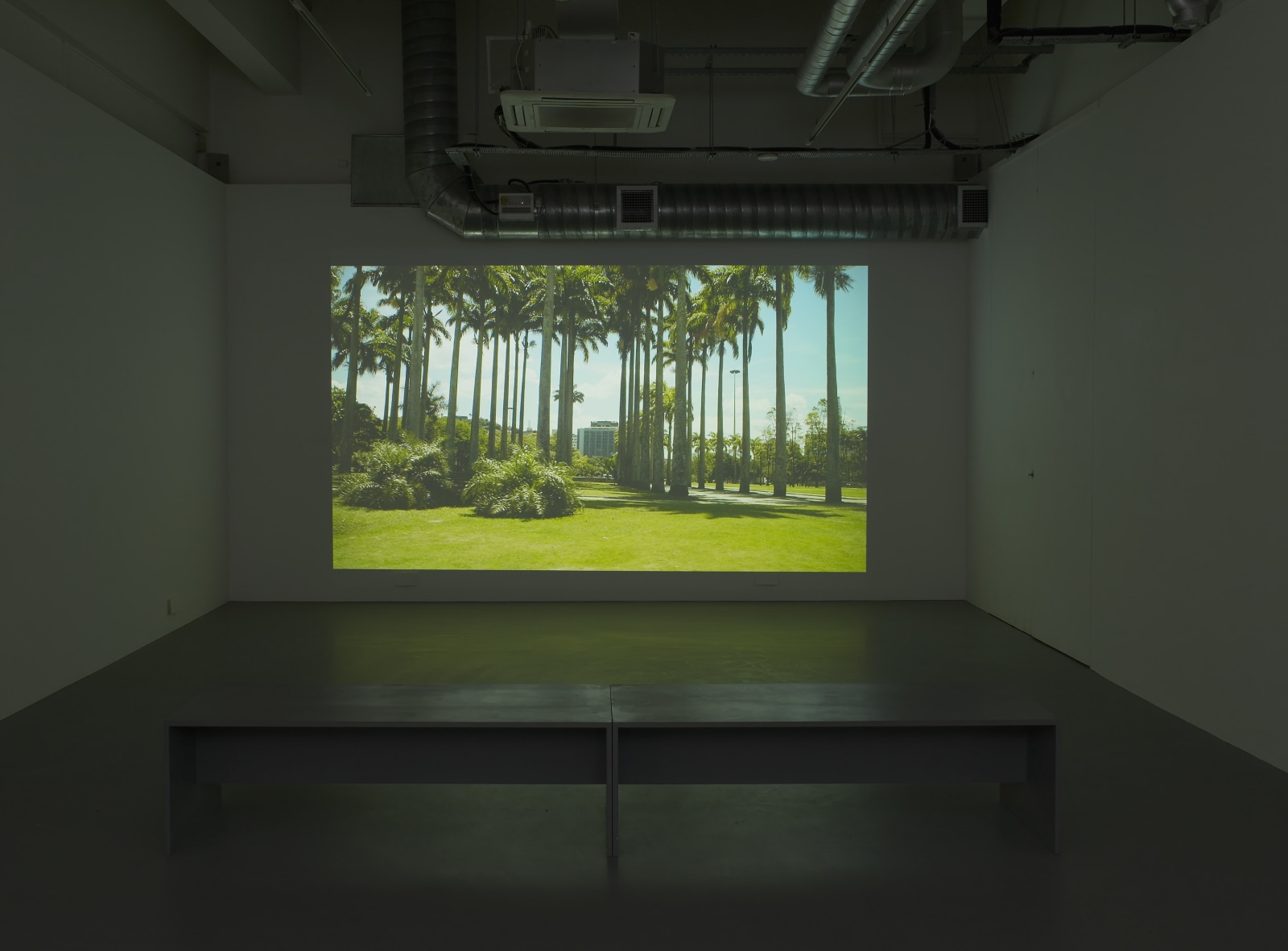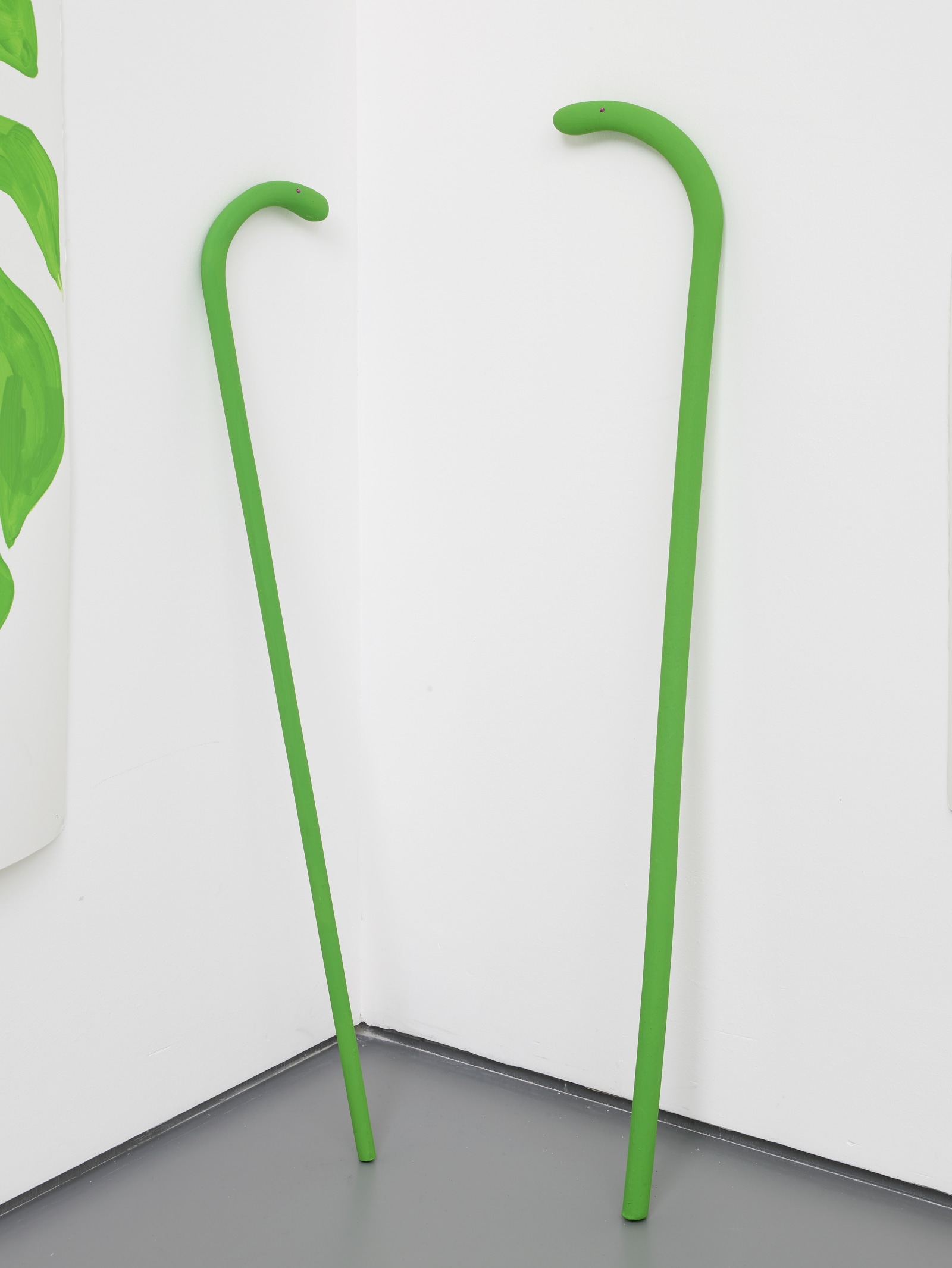
TopoDendroPhilia
Overview
Pilar Corrias Gallery is pleased to present TopoDendroPhilia, a proposal by Pablo León de la Barra with Leonor Antunes, Stefan Bruggemann, Jean-Pascal Flavien, Adrien Missika, Sophie Nys, Simon Popper, Julia Rometti & Victor Costales, Alejandra Seeber, and Daniel Steegmann Mangrané
"Kinski always says (the jungle) its full of erotic elements. I don't see it so much erotic. I see it more full of obscenity. It's just - Nature here is vile and base. I wouldn't see anything erotical here. I see fornication and asphyxiation and choking and fighting for survival and growing and just rotting away. Of course, there's a lot of misery. But it is the same misery that is all around us. The trees here are in misery, and the birds are in misery. I don't think they - they sing. They just screech in pain. It's an unfinished country. It's still prehistorical. The only thing that is lacking is - is the dinosaurs here. It's like a curse weighing on an entire landscape. And whoever goes too deep into this has his share of this curse. So we are cursed with what we are doing here. Its a land that God, if he exists has - has created in anger. It's the only land where - where creation is unfinished yet. Taking a close look at - at what's around us there - there is some sort of a harmony. It is the harmony of overwhelming and collective murder. And we in comparison to the articulate vileness and baseness and obscenity of all this jungle - Uh, we in comparison to that enormous articulation - we only sound and look like badly pronounced and half-finished sentences out of a stupid suburban novel, a cheap novel. We have to become humble in front of this overwhelming misery and overwhelming fornication, overwhelming growth and overwhelming lack of order. Even the - the stars up here in the - in the sky look like a mess. There is no harmony in the universe. We have to get acquainted to this idea that there is no real harmony as we have conceived it. But when I say this, I say this all full of admiration for the jungle. It is not that I hate it, I love it. I love it very much. But I love it against my better judgment."
Werner Herzog, in 'Burden of Dreams' documentary on the filming of Fitzcarraldo, 1982
TopoDendroPhilia explores human desires for vegetation and place, and the aesthetic results produced from these encounters. The exhibition is seen less like a 'curated' exhibition and more like a savage garden, an encounter with the jungle, a tropical greenhouse or the landscape of a park. TopoDendroPhilia presents artistic attempts to go beyond the exotic and represent, understand, or control that which seems to escape rational logic and representation. The exhibition space is thought as a garden, constructed not by rational thinking, but using 'untamed' human thought. TopoDendroPhilia confronts what Werner Herzog calls 'the obscenity of the jungle' with Yi-Fu Tuan's Topophilia or 'sentiment for an environment', as well as with Eduardo Viveiros de Castro's Inconsistency of the Savage Soul, where the possibility of relationships between the natural world and the human world can be re-imagined.
In TopoDendroPhilia the exhibition space is articulated by a series of natural, tectonic and historic layers that the visitor penetrates as an explorer would do in the jungle, and which attempt to rethink the possibilities of 'savage thought'. Jean-Pascal Flavien's Dinosaur Drawings are set in tropical or antediluvian landscapes, in them prehistoric time co-exists with science fiction producing a collapse of time. Daniel Steegmann's red aluminum chain curtain becomes a grotto entrance that marks the transition towards a vegetable environment. Here, Adrien Missika's photographs of plants and gardens in Brazil designed by Burle Marx are shown on display structures inspired by the ones used in the botanical department of the Indian Museum in Calcutta. Steegmann's hologram shows a gardening hand covered by grown leaves, blurring the border between animal and vegetal. Julia Rometti and Victor Costales's Americanas are a series of portraits of dead agave plants, a succulent that only flowers once in its life after which it dies. Meanwhile their film, Plantas Populares Movimiento: Agitato is a portrait of 'house plants' agitated by wind and filmed in their natural habitat, the Amazonian jungle. Leonor Antunes Random Intersection 3 hangs from the ceiling, in it leather horse bridles are buckled in sensual domination creating irregular configurations; the hanging structure resembles lianas or tropical vines, but also recalls Gego's (Gertrude Goldschmidt) interweaving Reticuláreas. Alejandra Seeber's Black Paintings are a series of night paintings of black grass and rainforests, here darkness prevails over the common 'green' image associated with these landscapes-nevertheless amongst the density one can see the light. In the same way Stefan Brüggemann's neon appears like a green light at the end of the exhibition jungle, A CEMENT CUBE IN THE JUNGLE explores the relationship between image and text, and the relationship between abstract geometry and the hidden nature of the world.
Downstairs, two artists present two different domesticated natures. Sophie Nys' Parque do Flamengo, portrays the park of the same name built on a landfill in the bay in Rio de Janeiro which was designed by Roberto Burle Marx between 1954 and 1959, and completed in 1965. The park, seven kilometers long, is a film and a song in itself. For the film, Nys invited Arto Lindsay to compose the soundtrack based on the names of the plants used by Burle Marx in the park. Finally Simon Popper's paintings on paper of Monstera Deliciosas (also known as Swiss Cheese Plants) are inspired by Ellsworth Kelly's plant drawings, and were made after studies of the plant at the Palmengarten in Frankfurt. Here the taxonomic pictorial studies that are common to Popper's work become wallpaper decoration. Meanwhile two Lion credenzas in the style of World of Interiors complete the domestic scene while winking to the lions that appear in Henri Rousseau's jungle paintings, jungles that Rousseau only visited in his imagination and which he constructed from visits to the zoo and the botanical garden.
Pablo León de la Barra is an independent curator, working internationally, and based in London.


